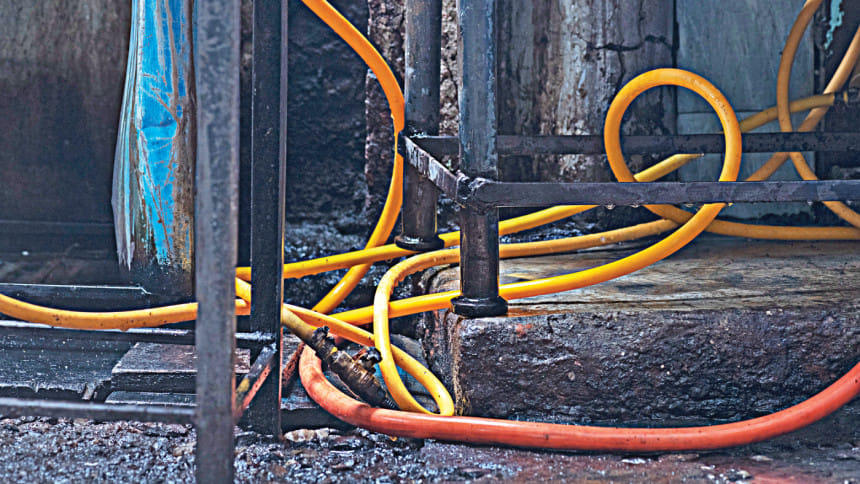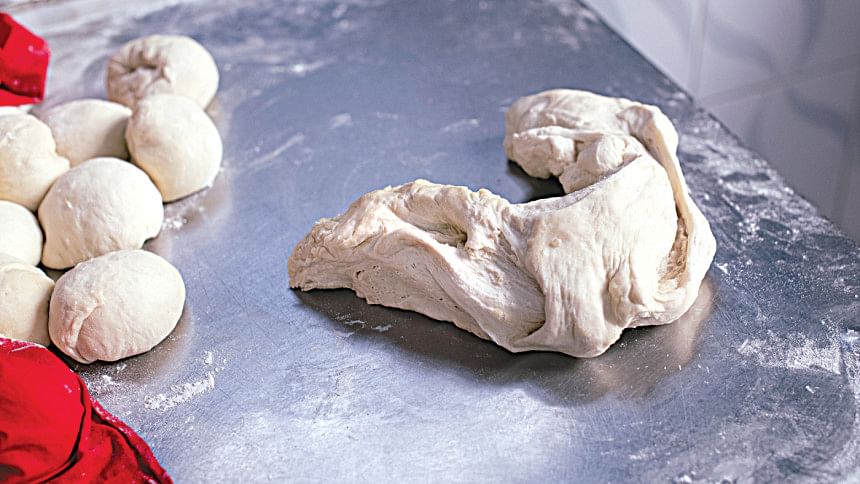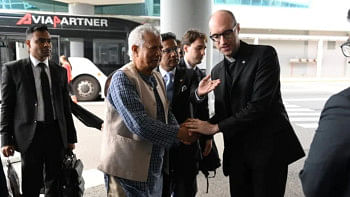Kromosho exhibition: Where past and present collide

An artistic mind finds inspiration even in the mundane details of life. It makes the ordinary extraordinary. The smell of frying omelettes, the stirring sound of the spoon in a teacup, the sight of a mother oiling her daughter's hair, or an old man reading a newspaper -- any of these can spark a fancy in their mind.
All these dull routines of our everyday life, and these intangible fleeting sights and sounds excite an artist, making them want to freeze these moments of magic realism in their art.
Photography is such a visual art form, that frames such creative expressions and ideations through images a photographer takes. And renowned Bangladeshi photographer Munem Wasif is one such artist, who can sniff out an artsy story in the actual moment.
The curator and educator will hold his solo exhibition, after a long hiatus since 2009, titled "Kromosho", loosely translated to "progressively or gradually changing".
The exhibition commences on April 18 at 6:00pm, at Bengal Shilpalay. "Kromosho" exhibits the artist's two decades of work on Puran Dhaka in three phases of timespan -- titled "Stereo, Kheyal, and Bare: encircling the past, present, and on to the imagined future".

"Gradually, these timelines cross each other's boundaries. The body of my work has a personal vocabulary and the history and atmosphere of old Dhaka that has always fascinated me. The place has been my muse for the longest time. The moments I have captured are given the colour of my imagination; from intimate memories of my childhood, my relationships, and the ether I grew up in. My imagination is more complex than the ordinary because I found streaks of semblance in these flashes from my real-life events," says Munem Wasif.
Wasif has documented multiple layers of time and recorded the exponential growth of old town communities, embracing urbanity through photography, film, and various other media. He celebrated their living without prejudice, and a sense of adapting, which is in constant transformation and is fluid.
"STEREO (2001-2022)" shows the city's casual comfort in dwelling both in the past and present; a refrigerator, LED lights, digital watch, or baking bakarkhanis in a custom-made oven, shunning the old clay tandoor, to depict how Old Dhaka morphed with time, embracing urbanity yet retaining its core of being chaotic, dramatic, and forever evolving.
"I revisited the places I photographed to witness the changes it went through. There, I again captured the newness and adaptability to changes over time to make a comparison. The deliberate juxtaposition of the latest photographs in the exhibition alongside the earlier black and white works, allows the audience to understand the hybridised realities of Puran Dhaka, and one is left in a space with a complex impression of contemporary life," explains Wasif.
"KHEYAL (2015-2018)" is primarily fiction or imagination capturing the enigma that is this historic city. Living amid the grandeur of neglected Mughal architecture are dynamic social groups and spontaneous neighbourhoods that inhabit spaces around courtyards, narrow lanes, and bustling bazaars; and the fine line between private and public space is faded.

"I would describe the content as characters who are lost in certain mental states and are found in other magical situations," comments Wasif.
"Shammano", or bare assemblage, is the final part of the exhibition. Here, Wasif reveals how the colour palettes of the chaos surrounding the city, or discarded objects and material triggered the urge to experiment and create something for him.
"Pieces of discarded wood, metal wires, and parts of furniture were given a new lease of life and purpose in my studio. I enjoyed rediscovering something new in the old, placing them in unexpected configurations, embracing the idea of chance in the process," notes Wasif.
A skateboard from broken pieces of cracked wood and, the broken legs of a chair were visualised as a third eye. "You need to have an eye to see and recalibrate the old," he adds.
To Wasif, his career has matured and aged along with this city. From film to digital photography, Wasif's relationship with Old Dhaka gradually deepened.
Photographs are not just realistic document of what is happening around you. It can very well be a poem that allows you to imagine the abstract moment – and that in itself is powerful.

 For all latest news, follow The Daily Star's Google News channel.
For all latest news, follow The Daily Star's Google News channel. 



Comments